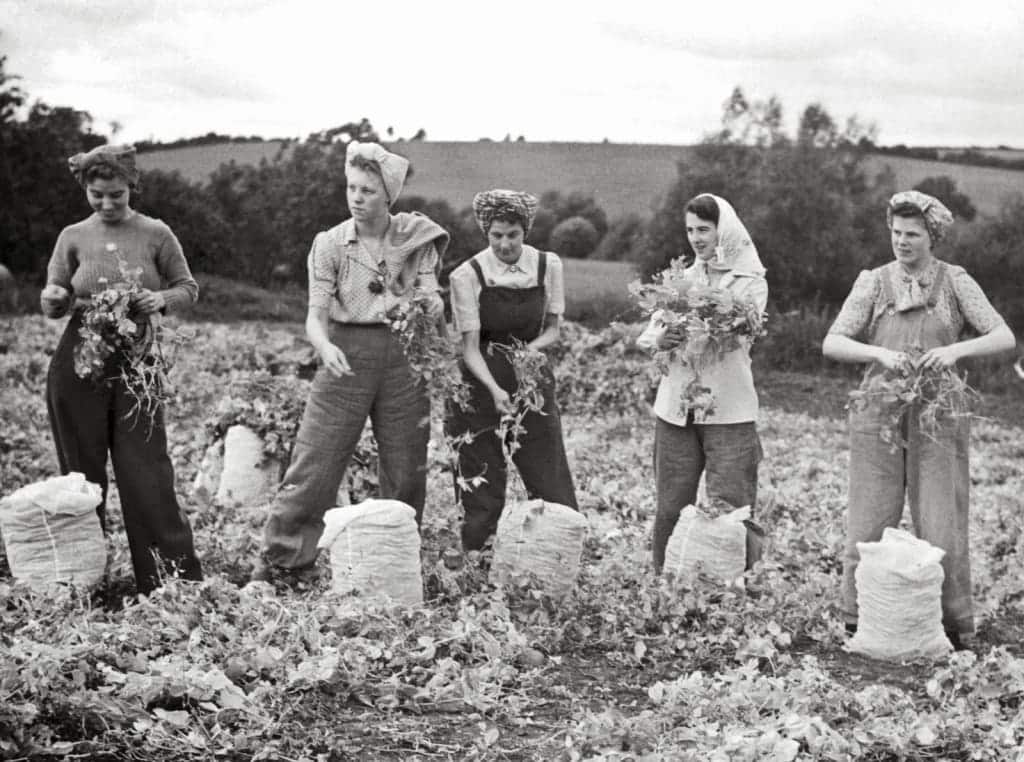In 1939, as men left to fight on the front line, the Women’s Land Army (WLA) reformed to boost Britain’s food production during World War Two.
Originally established in 1917 to address food shortages during the first Great War, the WLA once again drew thousands of women from towns and cities across the country. The initial aim was to increase the amount of food grown in Britain, reducing our dependence on imports and the demand for vital storage space on ships. In order to achieve this, help was needed on the farms.
At first the government called for volunteers but by 1941 women could be conscripted into the Land Army. Nicknamed ‘Land Girls’ there were more than 80,000 women employed by the Land Army at its peak.
Life in the Land Army was not always easy. Living conditions could be basic and many farmers were initially sceptical about employing young women to do the hard work needed. Hours were long and they worked outdoors through all weather conditions. As more women were recruited the need for housing became apparent. By 1944 over 22,000 Land Army recruits lived in 700 rural hostels. They were paid directly by the farmer or land owner, the minimum wage set at 28 shillings per week, with 14 shillings deducted for board and lodgings. The average working week was 50 hours a week. Introduction of the Land Girls Charter in 1943 awarded them one week holiday per year and raised the minimum wage, which was much lower than the wage received by their male peers.
To help ensure the safety of these young women and improve morale, the WLA recruited local volunteers to act as a point of contact if anything went wrong. From unfair treatment at the hands of a farmer’s wife, to underpaid wages and poor accommodation, these representatives tried to act as mediators between the farm and their Land Army employee. The Women’s Institute and local agricultural groups were also on hand to help the women integrate into the community.
The Land Army recruits carried out all of the tasks required on a working farm, but this was not their only role. Some were formed into anti vermin teams to help counter the threat that vermin such as rats, rabbits and foxes posed to food and animal fodder. It is thought that Land Girls killed over 50 million rats between 1939 and 1945.
The women also played a large role in clearing previously unsuitable land and preparing it for farming, many operating heavy machinery for the first time. Others were transferred to the newly formed Women’s Timber Corp. Around 6000 ‘Lumber Jills’ were involved with choosing and measuring trees for felling, as well as sawing and lifting timber, and burning brushwood.
Land Girls didn’t always work alone. The general public were encouraged to lend a hand, some saw it as a cheap way of accessing life in the countryside – a good alternative to busy and polluted cities like London. By 1943 there were 40,000 Italian prisoners of war working on British farms, many working alongside the Land Army.
Despite their hard work it took decades for the Women’s Land Army to gain full recognition. In December 2007 the Department for Environment, Food and Rural Affairs finally announced that the efforts of both the Women’s Land Army and the Women’s Timber Corp would be formally recognised through a commemorative badge. This badge of honour was awarded in July the following year, to over 45,000 surviving former Land Army women. In October 2014 a memorial statue to both organisations was unveiled at the National Memorial Arboretum in Staffordshire.
